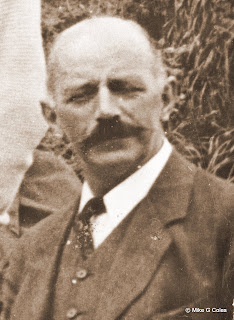George W Hearn, Founder of FINA

In the words of George W Hearn, a former secretary of Weston-super-Mare Swimming Club who went on to be President of the Amateur Swimming Association: “The formation of FINA in 1908 came about more by accident than intention … I thought that since the representatives of all Nations were in London for the Olympic Games of 1908, it would be a good opportunity to talk over the vexing question of amateurism and at the same time to compile a list of world records made under similar conditions and under proper supervision.”
The ASA gave Hearn permission to call what turned out to be an historic meeting, one that lasted four and a half hours at the Manchester Hotel in east London on July 19, 1908. “I occupied the Chair, I agreed to act in the position of Hon. Secretary, a post I retained for 20 years,” wrote Hearn in an article for a commemorative FINA Bulletin in 1938, when the federation celebrated its 30th birthday at a time when the winds of war were about to blow across the world.
The original minutes taken down and recorded by Hearn, the man at the helm of FINA from 1908 to 1924, when the first President was elected and the first Bureau formed, register the gathering in London under the title “Report of The International Swimming Conference”. The founding nations present were Britain (with no fewer than eight delegates from 23 men), Belgium, Sweden, Germany, Finland, Hungary, France and Denmark.
It was agreed that “England, Scotland, Ireland and Wales should for the purposes of future meetings be considered one country, and be entitled to two Representatives at any Meeting”, in common with all other nation members.
The minutes of the meeting register the new body as the “International Swimming Federation”, and it was not until a year later in Paris that the name “Federation Internationale [sic] De Natation Amateur” emerged, while the official list of founding member nations would not be formed until a year later, the minutes of a 1910 meeting in Brussels recording the First FINA member nations as: Australia, Austria, Belgium, Canada, Denmark, Finland, France, Germany, Great Britain, Holland, Hungary, Italy, South Africa, Sweden and the United States of America.
The achievements made at the foundation in London in 1908 suggest a greater sense of purpose and deeper desire to bring order and structure to sport that lacked common direction than Hearn himself acknowledged in his memoirs. The pioneers wasted no time in establishing the cornerstones of a new FINA rule book, and one of the most important decisions of the day showed the intention of those early guardians of swimming to take charge of what had been, at the international level, a very lose affiliation of swimming activities devoid of cohesion or common standards: ” … no nation shall institute, or allow to be instituted, within their jurisdiction, any Race or Competition, which shall have the title of a World’s Championship”.
That principle was in keeping with Hearn’s priority of not only codifying swimming but diving and water polo, standardisation of the structures of those sports crucial to their longevity. The first rules were drawn up in Paris in 1909. In London, the priority was to lay down a stringent definition of “amateur status” and enforce prevailing standards of decency by ruling that “no claim for Record can be considered unless all swimmers wear recognised costume with drawers under the costume”.
The term “amateur” was not only restricted to those who had “never competed for a money prize, declared wager, or staked bet” but extended to a ban on racing against anyone who was not of equal amateur status. In London 1908, it was agreed that world records could only be set in “absolutely still water (i.e. without current or tide)” and would be recognised from a list of events that reflected the disparity of standards across a world divided by imperial and metric measures. While records in all distances from 100 yards to 500 metres could be established in “a bath not less than 25 yards long”, anything from 880 yards upwards required the pool to be at least 100 metres in length.


Comments
Post a Comment